Sick of Aphids? Here’s How You Actually Win the Battle
I’ve spent more time than I can count in gardens, from tiny city balconies to sprawling properties, and I’ve seen it all. I’ll never forget one of my first big jobs—a whole row of young fruit trees was just… sad. The leaves were all curled up and yellow. When I flipped one over, boom. Thousands of tiny green bugs. That was my trial by fire with aphids, and it taught me something crucial: there’s no single magic spray. Winning the war on aphids is about understanding your enemy, using smart tactics, and honestly, just building a healthier garden overall.
In this article
- Know Your Enemy: The Aphid’s Sneaky Life Cycle
- Spotting the Signs Before It’s Too Late
- Choosing Your Weapon: Water, Soap, or Oil?
- The Go-To Recipe: A Proper Horticultural Soap Spray
- For Stubborn Cases: Adding Horticultural Oil
- The Long Game: Building a Garden That Defends Itself
- Final Thoughts: Be Safe, Be Realistic
- Inspirational Gallery
You can find a million quick-fix recipes online. Some are okay, some are useless, and a few can even scorch your plants. My goal here is different. I want to walk you through the professional-grade strategies that provide real, long-term control, not just a one-day fix. We’ll get into how these pests operate, how to spot them early, and how to manage them with simple tools and proven, safe mixes. Think of this as the practical guide for anyone who’s tired of watching their hard work get wrecked by these super common pests.
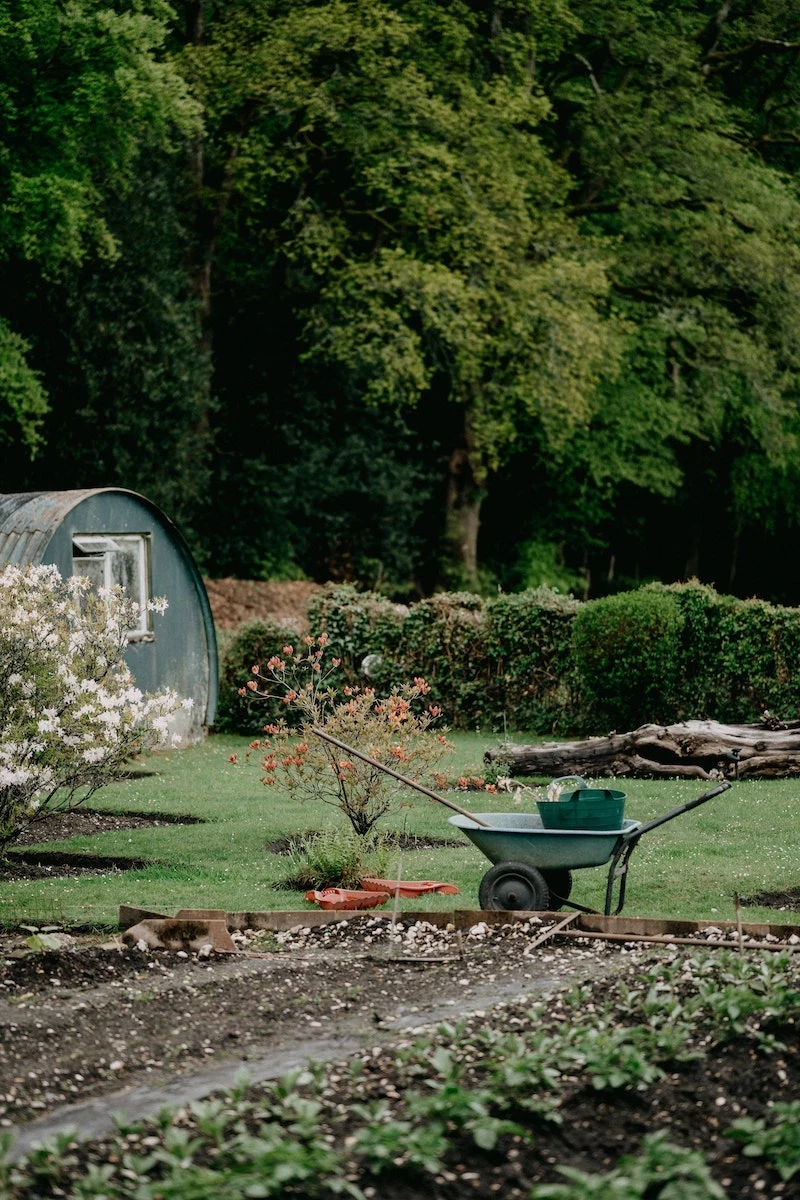
Know Your Enemy: The Aphid’s Sneaky Life Cycle
To beat any pest, you have to know how it thinks. And aphids? They are absolute masters of reproduction. Understanding their biology is your key to breaking the cycle.
Aphids are small, squishy insects that use a sharp, piercing mouthpiece to suck sap right out of your plants. This sap is the plant’s lifeblood, carrying all the sugars and energy it needs to grow. When aphids feed, they’re literally stealing the plant’s fuel, which is why you see all that weak, stunted, and yellowed growth.
But their real superpower is how they make more aphids. Through most of the growing season, nearly all aphids are female, and they reproduce asexually. They just pop out live female babies that are often already pregnant. It’s wild. This means a single aphid can explode into a colony of thousands in just a few weeks. It’s why a small problem can become a full-blown infestation seemingly overnight.
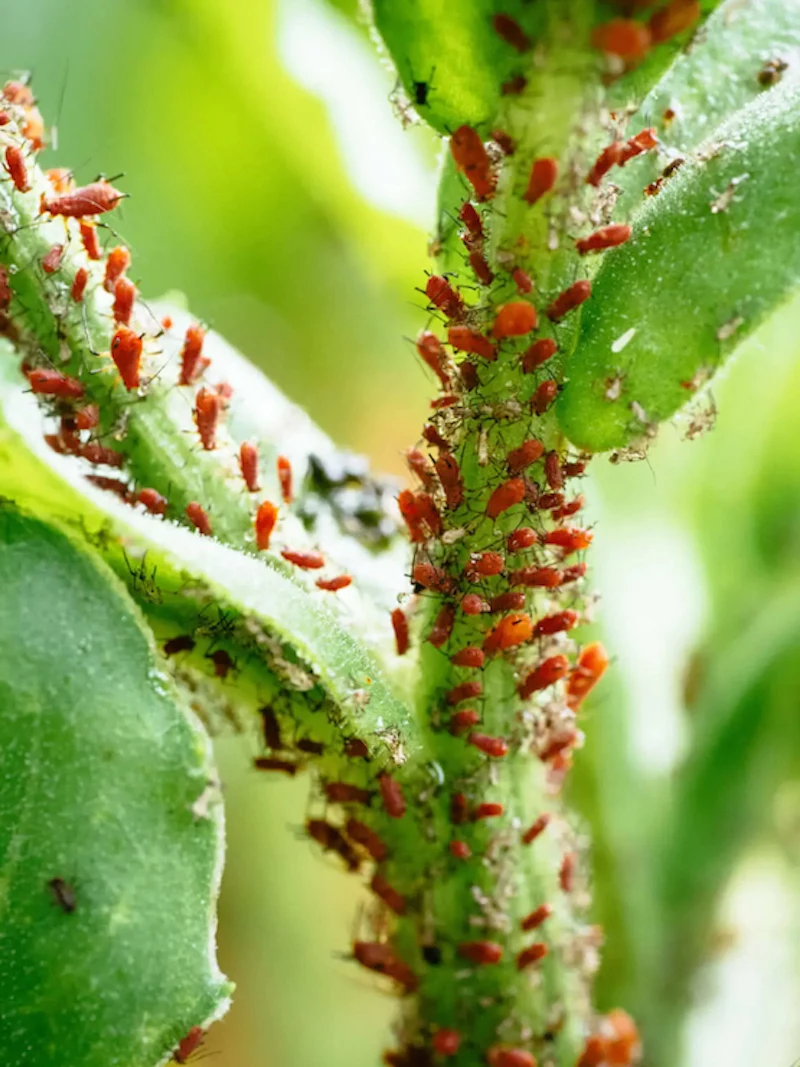
Oh, and it gets better. As they feed, they excrete a sticky, sugary waste called honeydew. If you’ve ever parked under an infested tree, you know exactly what I’m talking about. On the plant, this goo causes two huge issues. First, it’s a dinner bell for other pests, especially ants. Second, it’s the perfect breeding ground for a fungus called sooty mold. This stuff grows as a black, dusty film over the leaves, blocking sunlight and weakening your plant even more.
And about those ants… their relationship with aphids is a classic case of teamwork. The ants act like bodyguards, protecting the aphids from predators like ladybugs. In return, they get to “milk” the aphids for that sweet honeydew. Ants will even carry aphids to fresh, new leaves to help them expand their territory. So, if you see a conga line of ants marching up your prize rose bush, you can bet they’re heading to an aphid party. Controlling the ants is a huge part of controlling the aphids.
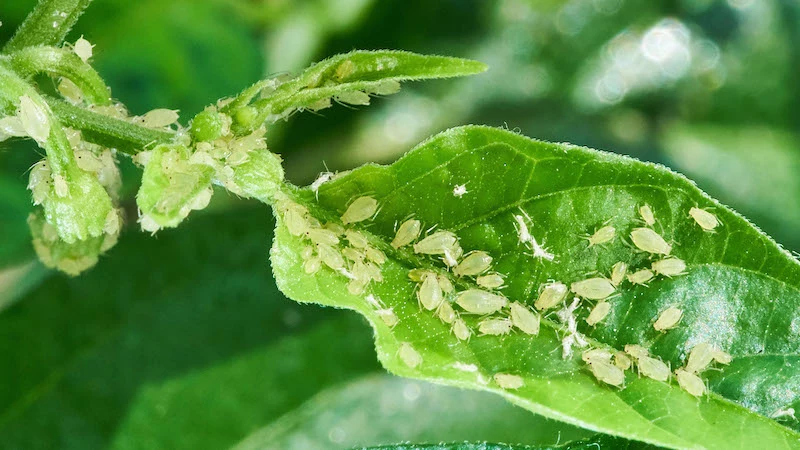
Spotting the Signs Before It’s Too Late
Before you even think about spraying, you have to be 100% sure you’re actually dealing with aphids. I always tell new gardeners to look for a cluster of clues, not just a single one.
- The Eyeball Test: Get up close and personal with your plants. Check the undersides of new, tender leaves and flower buds—that’s their favorite hangout spot. They’re tiny, pear-shaped, and can be green, black, yellow, pink, you name it. You’ll almost always find them huddled together in a crowd.
- Damaged Goods: Look for yellow, puckered, or curling leaves. Since aphids go for the fresh stuff, new growth is usually the first to show damage.
- The Sticky Factor: Touch the leaves. Do they feel tacky? See a shiny glaze on the foliage or the ground below? That’s honeydew. If you see a gross, black powder growing on top of it, that’s the sooty mold I mentioned.
- Ghost Skins: As aphids grow, they molt and leave their old skins behind. They look like tiny, white, papery versions of the aphid. You’ll often see these little flakes scattered among the live bugs.
- The Ant Parade: This is a massive red flag. A trail of ants climbing a plant stem almost always leads to an aphid colony they’re farming.
Once you see a few of these signs together, you can be confident in your diagnosis and move on to a plan of attack.

Choosing Your Weapon: Water, Soap, or Oil?
So you’ve confirmed it’s aphids. What now? In professional landscaping, we always start with the simplest, least invasive method first. It’s better for the plant, the environment, and your wallet. Let’s break down the main options.
A strong jet of water from the hose is your first move. It’s free, fast, and surprisingly effective for small-scale problems on tough plants like roses or shrubs. The blast just knocks the little guys off. The downside? It can be too rough for delicate seedlings or flowers, and you’ll have to repeat it every couple of days for a week or so to really make a dent.
Your next step up is a horticultural soap spray. This is the workhorse of organic pest control. It’s cheap to make, safe for most plants (including edibles!), and kills aphids on contact. It works by dissolving their waxy outer layer, causing them to dehydrate. The main drawback is that you have to be thorough—if the spray doesn’t touch the aphid, it won’t work.

For the really stubborn cases, you can bring out the horticultural oil spray. This is a heavier-duty solution that works by suffocating the pests and their eggs. It’s fantastic for persistent infestations or for treating dormant trees in the winter. But be warned: oil is more likely to damage sensitive plants, and you can’t use it in hot weather. Trust me on this—I once scorched a client’s prized Japanese Maple because I got impatient on a warm afternoon. It was an expensive, painful lesson I only needed to learn once!
The Go-To Recipe: A Proper Horticultural Soap Spray
If water-blasting isn’t cutting it, it’s time for a soap spray. Now, this is where a lot of people go wrong. They reach for the dish soap. Please don’t do this! Modern dish detergents have degreasers and chemicals that can strip the protective coating right off your plant’s leaves, leading to ugly burn spots.
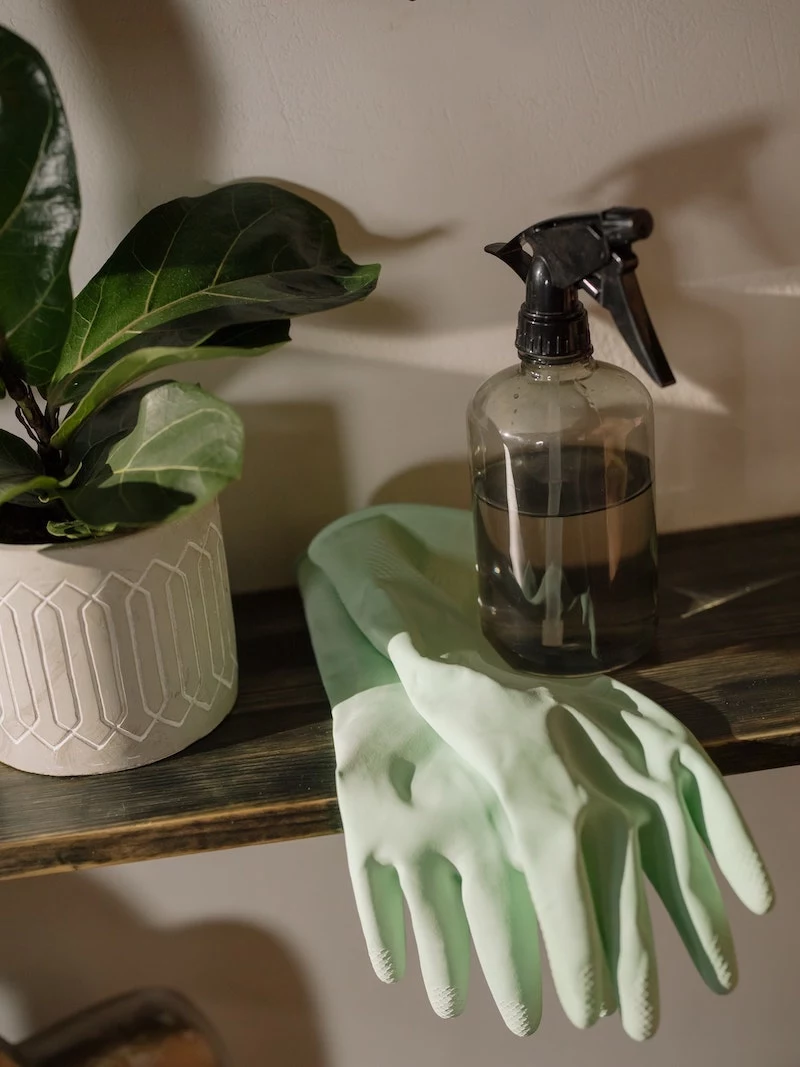
We use pure soap, not detergent. It’s a simple, effective contact killer.
My Plant-Safe Soap Spray Recipe:
- What you need: 1 gallon of water + 1 to 2 teaspoons of pure liquid soap.
- The Right Soap: Look for a pure Castile soap or buy a product specifically labeled as “insecticidal soap” from a garden center. The key is to avoid anything with degreasers, moisturizers, or sanitizers.
- Water Tip: If your tap water is very hard, the minerals can make the soap less effective. Using distilled or filtered water is a pro move that gives your spray a little extra punch.
A good pump sprayer is a great investment here. You can get a solid 1- or 2-gallon one at any hardware store for about $15-$30, and it makes getting total coverage way easier than a little trigger bottle.
Super Important Question: Is This Safe for My Veggie Garden?
Yes! This is one of the best parts about using a simple soap spray. Since it works physically and has no residual poison, it’s safe for edibles. The Pre-Harvest Interval (or PHI) is basically zero. That means you can spray your kale in the morning and harvest it for dinner that night (just give it a good rinse, as you always should). Of course, you can also find pre-mixed insecticidal soaps at the store. They work great if you’re short on time, but honestly, making your own is way cheaper in the long run.
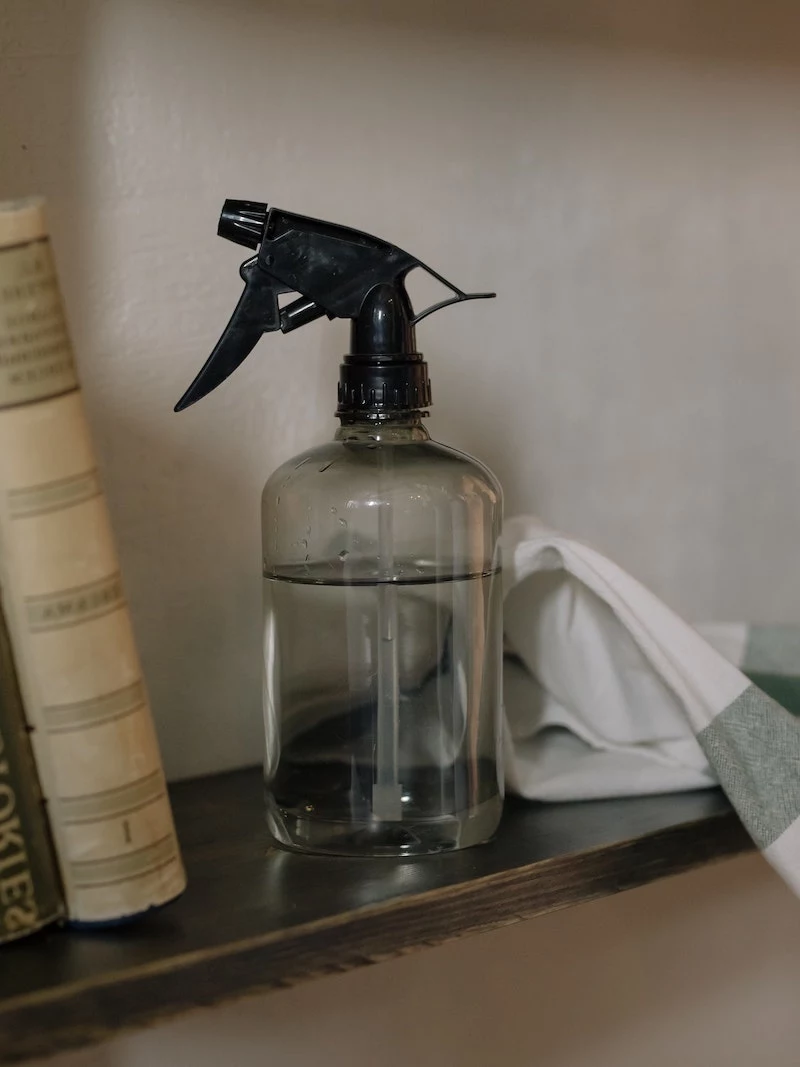
How to Apply It Like a Pro:
- Always Test First. I can’t stress this enough. Spray a single leaf, wait a day or two, and check for damage. Better to sacrifice one leaf than an entire plant.
- Timing is Everything. Spray in the cool of the early morning or late evening. Spraying in the hot sun is a recipe for scorched leaves. This also protects pollinators like bees, which are less active at these times.
- Coverage is King. Remember, this stuff has to touch the bugs to work. Start from the bottom of the plant and work your way up. Drench the undersides of leaves, the stems, and all the little nooks and crannies until the plant is dripping wet. Use the ‘jet’ or ‘flat’ setting on your hose or sprayer—’mist’ just won’t knock them off.
You’ll need to reapply every 5-7 days until the problem is gone, since the soap doesn’t leave behind any pest-killing residue.
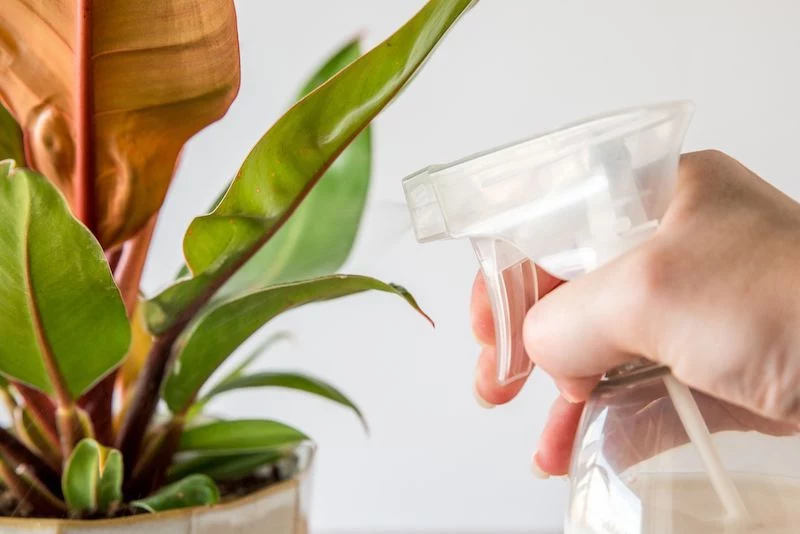
For Stubborn Cases: Adding Horticultural Oil
Okay, so sometimes soap alone isn’t enough. For a really heavy infestation or for aphids with a waxy coating, adding horticultural oil to your spray is the next step. Oil works by a different method: suffocation. It clogs the aphid’s breathing pores. Game over.
My Pro-Level Oil & Soap Spray Recipe:
- Ingredients: 1 gallon of water + 1 teaspoon of pure liquid soap + 2 tablespoons of horticultural oil.
- The Right Oil: Use something labeled ‘horticultural oil,’ ‘summer oil,’ or ‘all-season oil.’ Neem oil is a popular choice because it also helps with fungus and discourages feeding. Don’t use kitchen cooking oil! A bottle of proper horticultural oil costs around $20, but it will last you a couple of seasons.
- Mixing Order (this is critical!): First, mix the soap and water in your sprayer. THEN, while shaking or swirling the sprayer, slowly add the oil. The soap acts as an emulsifier, creating a milky mixture. Shake it every few minutes during application to keep it from separating.
Heads Up! Oil Safety Rules:
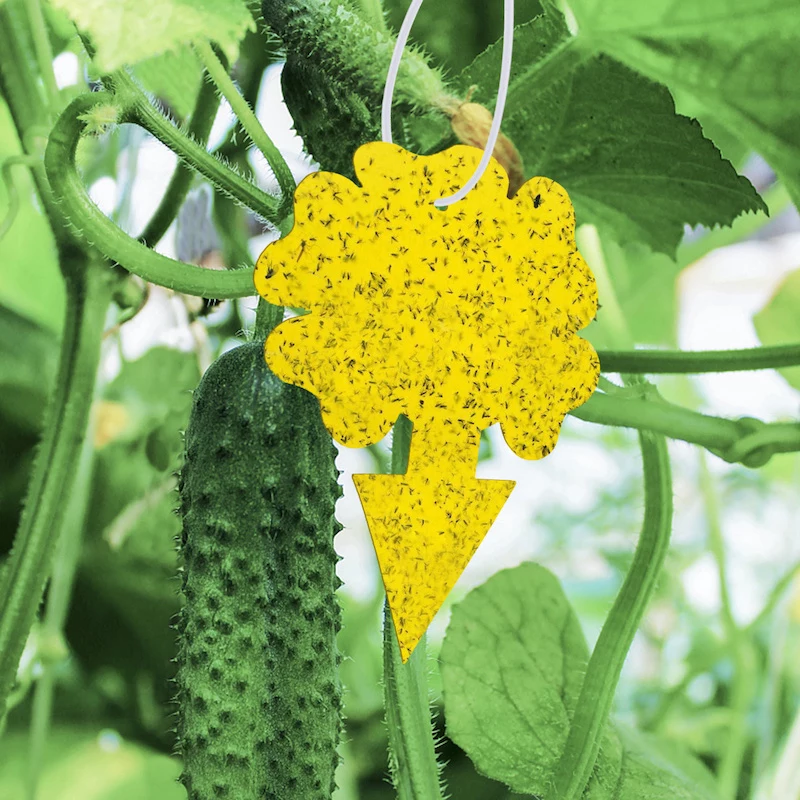
- Watch the Temp: Never, ever apply oil when it’s over 85°F (30°C). You will fry your plants.
- Know Your Plants: Some plants, like Japanese maples and blue spruce, are very sensitive to oil. Always do a spot test.
- Don’t Spray Stressed Plants: If a plant is wilted from lack of water, don’t spray it with oil. Water it well a day or two before you plan to treat it.
The Long Game: Building a Garden That Defends Itself
Sprays are reactive. A truly resilient garden has its own built-in defense system. The most sustainable way to manage pests is to create an environment that invites in the good guys.
Recruit Nature’s Exterminators
Your garden is crawling with predators that think aphids are a delicious snack. Your job is to roll out the welcome mat for them. We’re talking ladybugs, lacewings, hoverflies, and tiny parasitic wasps.
A fun fact: Did you know a single ladybug can devour up to 5,000 aphids in its lifetime? They are absolute eating machines!
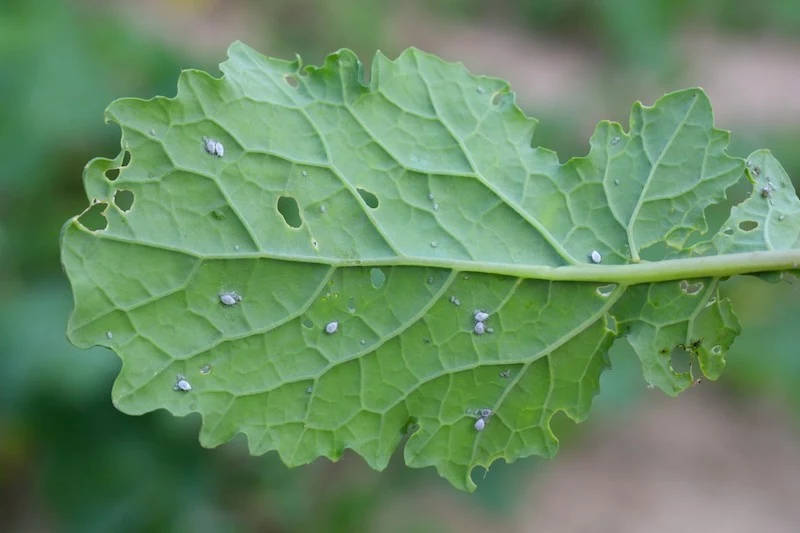
To attract them, you need to plant things they love. They’re drawn to small-flowered plants that provide nectar and pollen. My go-to list includes sweet alyssum, dill, fennel, cilantro, and yarrow. I just sprinkle them in among my roses and veggies.
Use a Trap Crop
This is a clever old-school trick. A trap crop is a plant that aphids love even more than your prized tomatoes. You plant it nearby to lure them away. Nasturtiums are a classic for this—they’ll often get covered in black aphids while your other plants are left alone. Once the nasturtium is infested, you just pull the whole plant and throw it in the trash (not the compost!).
Break Up the Ant-Aphid Alliance
Remember the ant bodyguards? If you stop them, you leave the aphids vulnerable. For trees and woody shrubs, a sticky barrier is incredibly effective. You can buy a special goo for this at most garden centers. But NEVER apply it directly to the bark, as it can damage the tree. Here’s the trick: first, wrap a 4-inch-wide band of heavy paper or duct tape (sticky-side-out) tightly around the trunk. THEN, smear the sticky barrier onto the tape. This creates a moat that the ants can’t cross.
Final Thoughts: Be Safe, Be Realistic
Even though these are “natural” methods, you still need to be smart and safe.
Quick Safety Checklist:
- Always wear gloves and eye protection. Soap in the eyes is no fun.
- Don’t spray on a windy day. You don’t want this stuff blowing back in your face.
- Pro-Tip: Get two sprayers and label them! One for pest/disease sprays, and one for weed killers. Use a big permanent marker. You never, EVER want to mix them up. Even a tiny bit of herbicide residue can kill your plants.
- Mix only what you need. These sprays don’t store well.
And finally, be realistic. The goal is control, not complete eradication. A few aphids on a healthy plant are just food for the beneficial bugs you’re trying to attract. Success isn’t a garden with zero pests; it’s a garden that is healthy, thriving, and beautiful, even with the normal ebb and flow of nature.
But if you have a massive, valuable tree that’s infested, or you’ve tried everything and are still losing the battle, don’t be afraid to call a certified arborist or a local pest control advisor. Sometimes, you just need to bring in a specialist with the right equipment and expertise.
Inspirational Gallery
Don’t just focus on the aphids; look for their bodyguards. Ants actively “farm” aphids, protecting them from predators in exchange for the sweet honeydew they excrete. If you see a trail of ants marching up your prize rose bush, there’s a high probability they’re heading to an aphid colony. Managing the ants, often with sticky barriers like Tanglefoot around tree trunks or diatomaceous earth at the base of plants, is a crucial step in disrupting this destructive partnership.
Can a simple jet of water really be effective?
Absolutely, especially for early-stage or minor infestations. It’s the first line of defense for a reason. Use a spray nozzle on your hose to deliver a firm (but not plant-damaging) stream of water directly onto aphid colonies, focusing on the undersides of leaves and new growth. This physically dislodges them. While many won’t be able to return, this method is most effective when done every 2-3 days for a week to break their reproductive cycle.
A single ladybug can devour up to 5,000 aphids in its lifetime.
Harnessing this natural predation is a cornerstone of organic pest control. Instead of just spraying, you’re building a self-regulating ecosystem. You can purchase live ladybugs from suppliers like Arbico Organics, releasing them in the evening at the base of infested plants so they are more likely to stay and get to work.
Go easy on the nitrogen. While essential for leafy growth, high-nitrogen fertilizers produce lush, soft shoots that are an irresistible five-star meal for aphids. They can detect the tender growth and will flock to it. Opt for balanced, slow-release organic fertilizers that promote steady, resilient plant growth instead of sudden, vulnerable flushes.
Companion planting isn’t just folklore; it’s a smart defensive strategy. Aphids navigate by scent, and you can use strongly aromatic plants to confuse and repel them. Try interplanting these among your vulnerable ornamentals and vegetables:
- Chives and Garlic: Their strong sulfurous compounds are highly repellent to aphids.
- Catnip: A known aphid deterrent (but be prepared for visiting felines!).
- Marigolds: French marigolds release a chemical from their roots that can deter pests.
- Nasturtiums: Often used as a “trap crop,” they lure aphids away from more valuable plants.
Insecticidal Soap: A contact poison that works by washing away the aphid’s protective outer layer, causing dehydration. A great choice for immediate knockdown with no residual effect. Safer Brand Insect Killing Soap is a popular, ready-to-use option.
Neem Oil: More complex. It acts as a repellent, an anti-feedant, and a hormone disruptor that messes with the pest’s life cycle. It has a longer-lasting, systemic effect. A concentrated product like Bonide’s Neem Oil needs to be diluted properly before use.
For a quick fix on edibles, soap is often preferred. For persistent problems on ornamentals, neem oil provides longer-term control.
- You’ll preserve the beneficial insects that are your greatest allies.
- Your soil’s microbial health won’t be compromised.
- There’s no risk of chemical runoff into waterways.
The secret? Resisting the urge to use broad-spectrum chemical pesticides. These products kill indiscriminately, wiping out ladybugs, lacewings, and parasitic wasps right along with the aphids, leaving your garden defenseless for the next inevitable pest invasion.
Look for the secondary signs. Sometimes, the first clue isn’t the bugs themselves but a thin, black, dusty film covering the leaves. This is sooty mold, a fungus that grows on the sugary honeydew aphids leave behind. It doesn’t directly harm the plant but blocks sunlight, hindering photosynthesis and weakening the plant over time. If you see sooty mold, check the leaves directly above it for the culprits.










